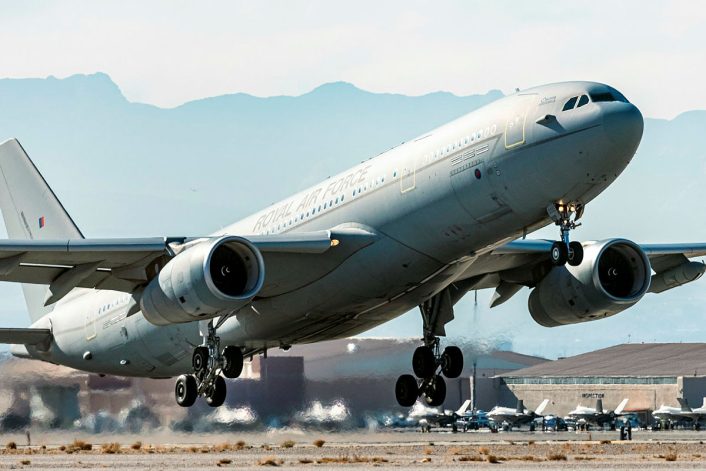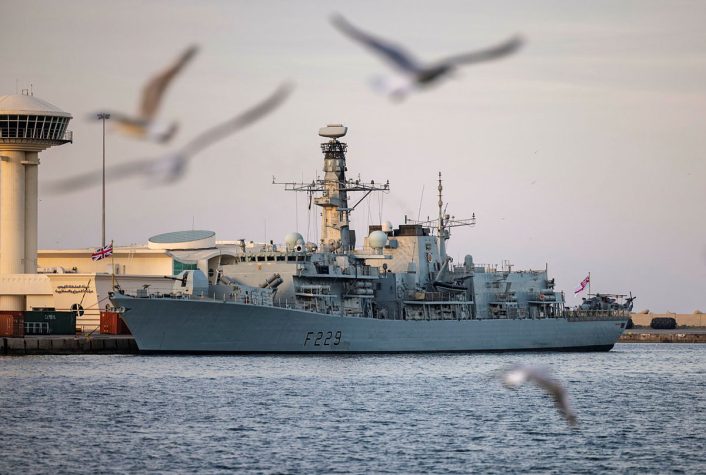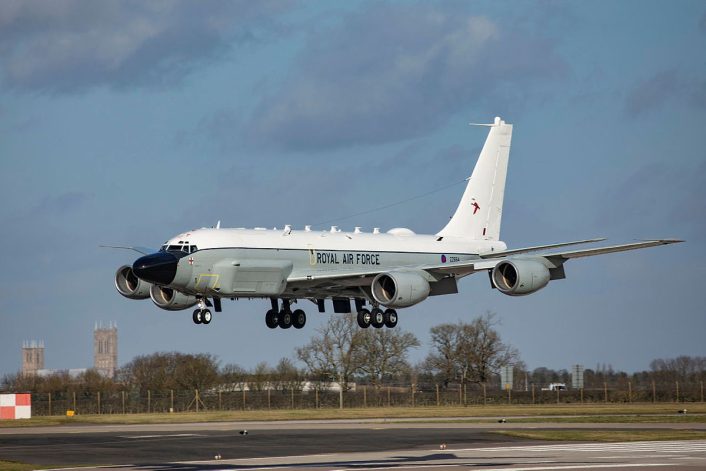The RAF is deploying further Typhoon FGR4 and Voyager aircraft to the Middle East as the war between Israel and Iran escalates.
UK Prime Minister Sir Keir Starmer made the announcement that he was increasing the Royal Air Force’s deployed forces in the Middle East whilst on board a government aircraft heading towards Canada for an emergency meeting of the G7. The Prime Minister was asked by reporters if he would support Israel now that it has been attacked.
“This is not only fast-moving, it’s intense,” he replied. “These are obviously operational decisions and the situation is ongoing and developing and therefore I’m not going to get into the precise details. I will always make the right decisions for the UK. We are moving assets to the region, including jets, and that is for contingency support.”
This is likely in the case that the war escalates to include Iranian attacks on Britain’s regional allies or an attack on British bases in the region. In fact, Iranian state media reported that UK, French and US bases in the region would come under attack if the countries aid Israel in its defense.
So far, it has been reported the UK has not provided support to Israel for the ongoing Operation Rising Lion or the defense against the Iranian retaliation.
The UK was not officially informed of the Israeli attack on Iran before it occurred and did not provide any support for the operation.
Israel no longer considers Britain a reliable partner after sanctions were imposed on two Israeli ministers.
Source: The Times
— Clash Report (@clashreport) June 14, 2025

The RAF has a base on Cyprus, RAF Akrotiri, where a deployment of Typhoons is already based owing to their participation in Operation Shader, the UK’s response to Daesh (ISIS). It is from here that the RAF has participated in bombing missions against the Houthis as well as in air defense missions against previous Iranian drone attacks against Israel in 2024.
The UK also operates the United Kingdom Naval Support Facility out of Bahrain, where a Type 23 frigate HMS Lancaster and two mine hunting vessels HMS Middleton and HMS Bangor operate from.

The decision to increase the number of fighters in the region was made on Friday morning as ministers saw the situation deteriorate prior to the commencement of hostilities by Israel. The Prime Minister has repeatedly emphasized de-escalation and the need for a diplomatic solution to the present conflict between Israel and Iran.
“Our constant message is to de-escalate, and therefore everything we’re doing, all discussions we’re having are to do with de-escalation,” Starmer said. “We do have long-standing concerns about the nuclear programme Iran has. We do recognise Israel’s right to self-defence. But I’m absolutely clear that this needs to de-escalate. There is a huge risk of escalation for the region. And, of course, all of this is linked to what’s going on in Gaza.”
RC-135 Leaves Qatar
RAF and USAF RC-135 Rivet Joint aircraft departed Qatar between 4am and 5am local time as the first attacks on Iran seemed to go in. They left Al Udeid air base in Qatar and returned to Europe, with the RAF RC-135 landing back at RAF Waddington and the US jets to Crete.

The USAF aircraft had been seen on Flight Radar patrolling Iran’s coast, however the RAF aircraft seemed to be either out of coverage or was using the transponder’s encrypted mode so no information on their activities is available.
🇺🇸🇬🇧🇮🇱 : ALL 3 RC-135 Rivet Joint (2x USAF, 1x RAF) reconnaissance aircraft deployed to Al Udeid airbase in Qatar have scrambled and are heading west. pic.twitter.com/QjzOQbkYR2
— OSINT Expert (@OsintExperts) June 13, 2025
According to the Sun, the presence of the RAF Rivet Joint may be explained by the passing of the Royal Navy’s Carrier Strike Group through the region, which the aircraft could have been supporting.
The Aviationist will continue monitoring the situation as events unfold.









